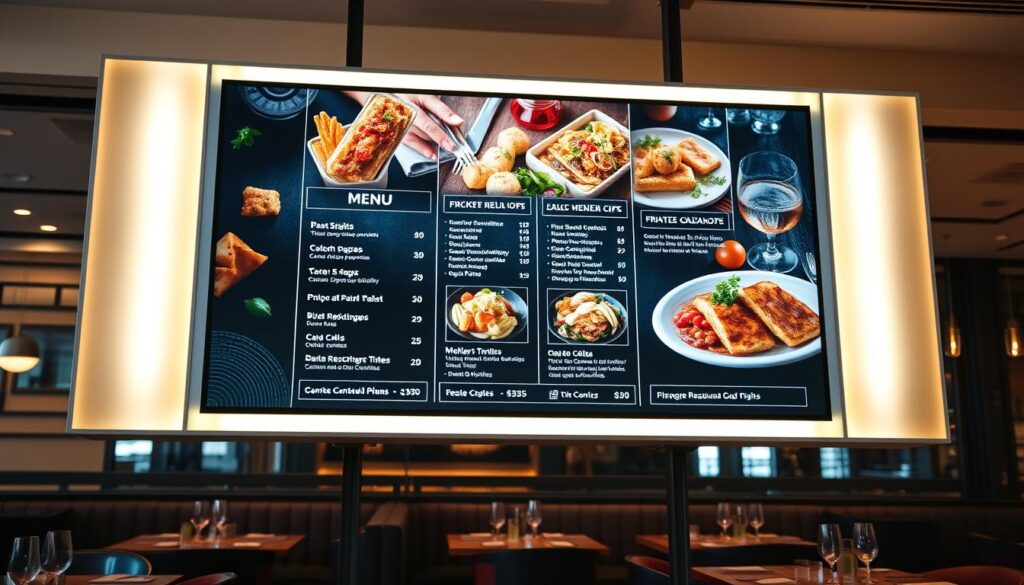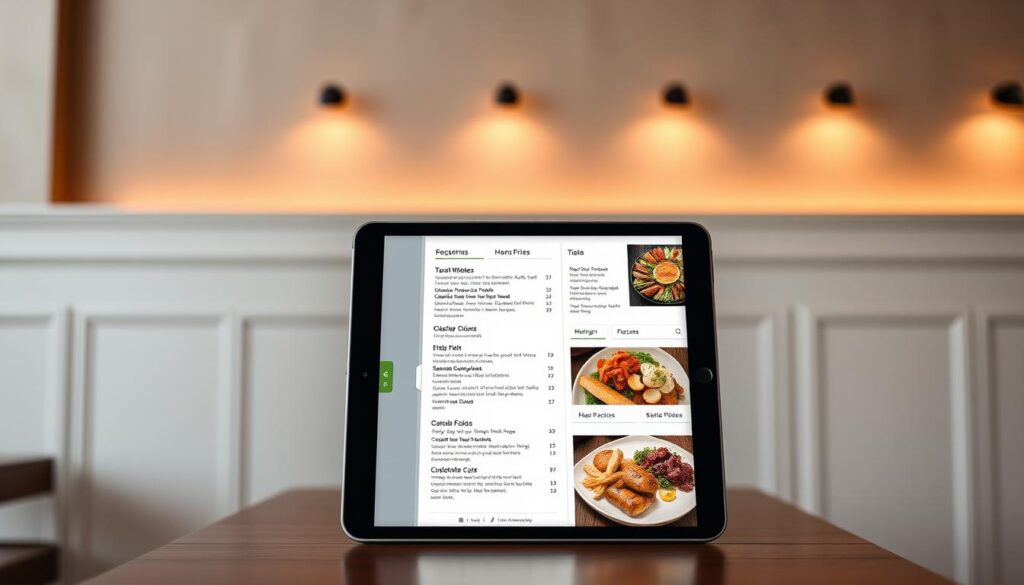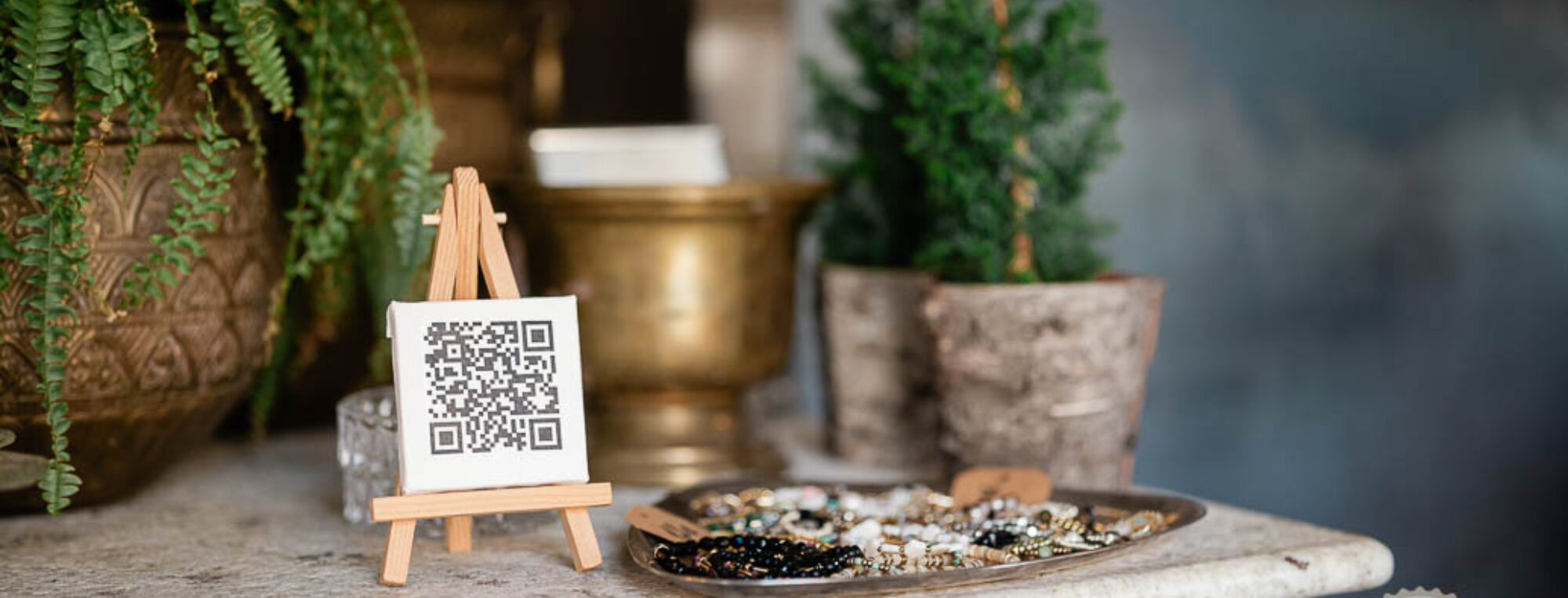Ever felt frustrated when trying to order from a stained or hard-to-read list of dishes? You’re not alone. Studies show that 86% of customers struggle with poorly designed options, leading to confusion and slower service. Outdated formats can turn a simple decision into a headache—for both diners and businesses.
Modern solutions, like high-definition displays, create a smoother experience. They keep content fresh, visually appealing, and easy to navigate. Meanwhile, traditional versions often wear out quickly, hurting your brand’s image.
Ready to upgrade? Try our 30-day free trial at www.pikMenu.com/en/registration and see the difference firsthand.
Key Takeaways
- 86% of diners face challenges with outdated formats.
- HD visuals enhance clarity and speed up ordering.
- Damaged materials negatively impact customer perception.
- Streamlined designs reduce decision fatigue.
- First impressions matter—opt for crisp, updated displays.
Digital Menu vs. Paper Menu: Key Differences
Choosing what to eat shouldn’t feel like solving a puzzle. Modern solutions transform how diners interact with your offerings, while traditional methods lag behind. Let’s explore the gaps.
Interactivity and Customer Engagement
Static lists lack features like zoom or translation. Interactive displays let guests explore dishes visually, check allergens, or even watch food prep videos. This keeps them engaged longer.
Example: A QR code on the table lets diners access nutritional info instantly. No more guessing about ingredients.
Update Speed and Flexibility
Reprinting takes time and money—chains do it 3x yearly on average. Digital options sync changes across locations in seconds. Seasonal specials? Dynamic pricing? Done with a click.
Fact: Updates are 90% faster, eliminating outdated items overnight.
Hygiene and Sustainability
Shared lists harbor germs—research shows they’re 100x dirtier than toilet seats. Screens reduce contact while cutting paper waste. Bonus: 10 locations save 3.2 tons of paper annually.
Your diners get cleaner options, and you help the planet. Win-win.
Why Restaurants Are Switching to Digital Menus
Running a restaurant means constantly balancing costs and customer satisfaction. The industry is shifting toward screens because they solve both challenges at once. From slashing printing bills to personalizing orders, here’s what’s driving the change.

Cost Efficiency and ROI
Traditional menus cost $500+ annually per location for design and reprints. Urban Café saved 40% within months by switching—funds they redirected to staff training. Most venues break even in under 6 months.
Enhanced Customer Experience
Fusion Bistro boosted upsells by 22% using high-res food visuals. Interactive options like multilingual support cater to diverse guests. „Customers spend 30% less time deciding when they see dishes visually,“ notes their manager.
Real-Time Updates and Dynamic Pricing
Adjust items instantly for holidays or ingredient shortages. Happy hour specials? Update all tablets in seconds. Café Delight reduced table turnover time by 30% with live promo displays.
Data Collection and Analytics
Heatmaps reveal which dishes get ignored. Order history helps staff suggest favorites. Try these tools risk-free with our 30-day trial—no credit card needed.
Designing an Effective Digital Menu
Great visuals make choosing dishes effortless and enjoyable. Restaurants with high-quality photos see 27% higher sales, proving that what you show matters as much as how you display it. Follow these strategies to create a layout that delights guests and drives orders.

👉 Read more: 5 Reasons to you Digital Menu
Best Practices for Visual Appeal
Use the F-pattern layout—it matches natural eye movement. Group items into intuitive categories (appetizers, mains, desserts) to speed up decisions by 68%. Limit sections to 7 dishes max to avoid overwhelm.
High-definition photos (minimum 1200px width) make food look irresistible. Add dietary icons (vegan, gluten-free) for clarity. DotSignage’s drag-and-drop templates cut setup time by 80%, with built-in color schemes that reflect your brand.
| Element | Best Practice | Impact |
|---|---|---|
| Images | 1200px resolution, natural lighting | +27% sales lift |
| Layout | F-pattern, 7-item sections | 68% faster ordering |
| Colors | Contrasting text/brand palette | 22% better readability |
Avoiding Common Design Mistakes
Overcrowding is the top customer frustration. Leave 30% negative space to let design breathe. Test load speeds—if your menus take over 2 seconds to display, 53% of guests will abandon them.
Skip fancy fonts that are hard to read. Stick to sans-serif (like Arial) for clarity. Avoid generic terms like „house special“—describe dishes vividly („Slow-roasted garlic butter salmon“).
„Customers spend 30% less time deciding when they see dishes visually.“
Ready to upgrade? Try DotSignage’s pre-built digital menus with a 30-day free trial—no coding needed.
Conclusion: The Future of Menus Is Digital
The way diners explore food options is evolving rapidly. With 73% preferring interactive displays, the industry shift is clear. AR experiences already boost engagement by 40%, while AI-driven recommendations—launching in 2024—will personalize orders like never before.
Beyond convenience, these tools cut waste. One location saves 12 trees yearly by ditching paper. For restaurants, it’s a competitive edge: faster service, happier customers, and real-time updates.
Ready to lead the change? Start your 30-day free trial at www.pikMenu.com/en/registration. Existing users can unlock premium features like AI analytics today.
FAQ
What are the main benefits of using digital displays over printed versions?
Digital displays offer interactivity, faster updates, and better hygiene. They also allow for dynamic pricing and real-time promotions, improving customer engagement.
How does switching to digital help with restaurant costs?
It reduces printing expenses and waste, while also enabling data-driven decisions through analytics. Over time, this leads to higher ROI.
Can digital menus improve customer experience?
Yes. High-quality photos, easy navigation, and instant updates make ordering smoother. Customers also appreciate interactive features like filtering options.
Are digital menus harder to maintain than traditional ones?
Not at all. Cloud-based systems let you update items, prices, and promotions instantly without reprinting. Staff training is minimal.
What design tips ensure an effective digital display?
Use clear fonts, high-resolution images, and logical grouping. Avoid clutter and ensure quick readability to maximize customer satisfaction.



One thought on “Digital Menu vs. Printed Menu: Which One Is More Effective?”
Comments are closed.